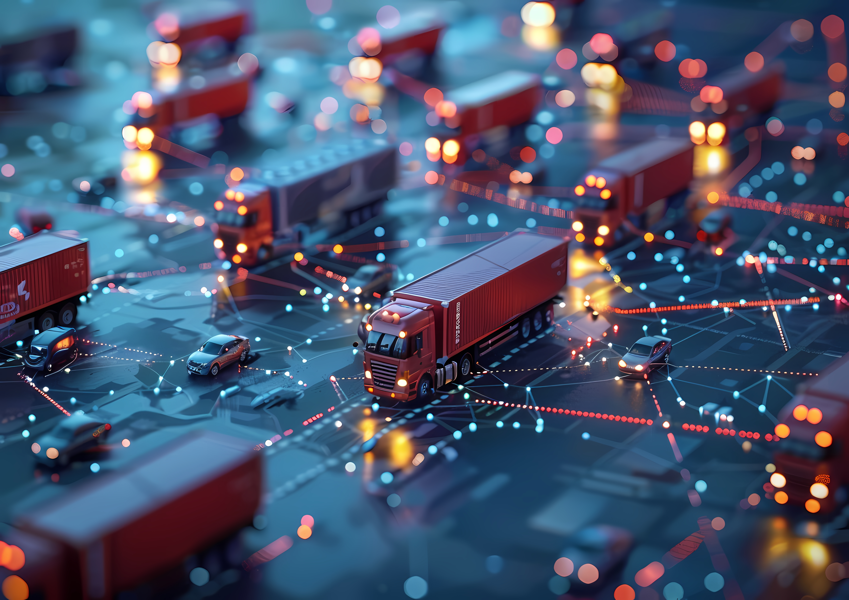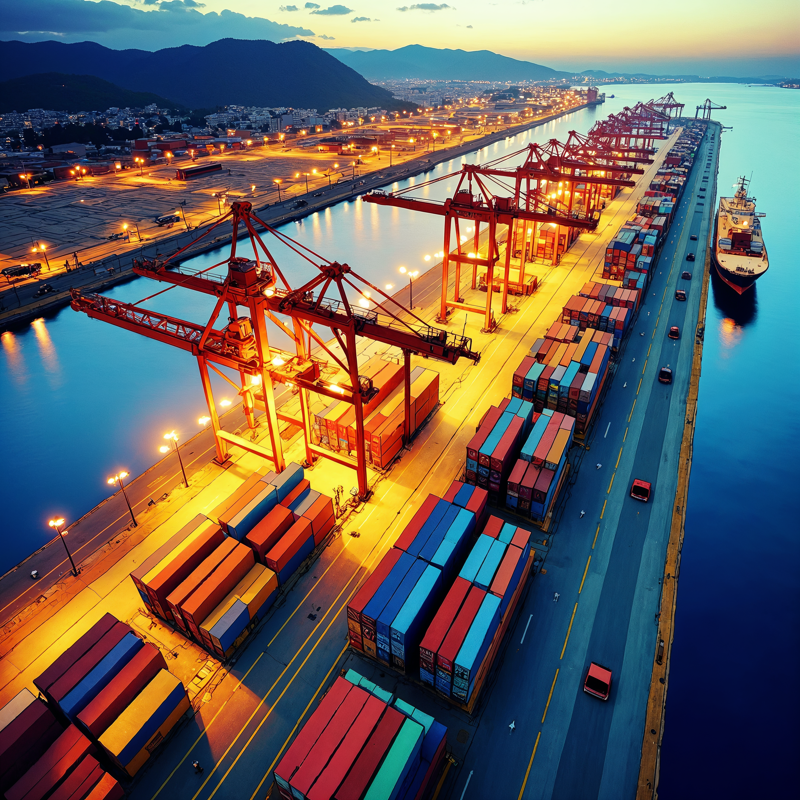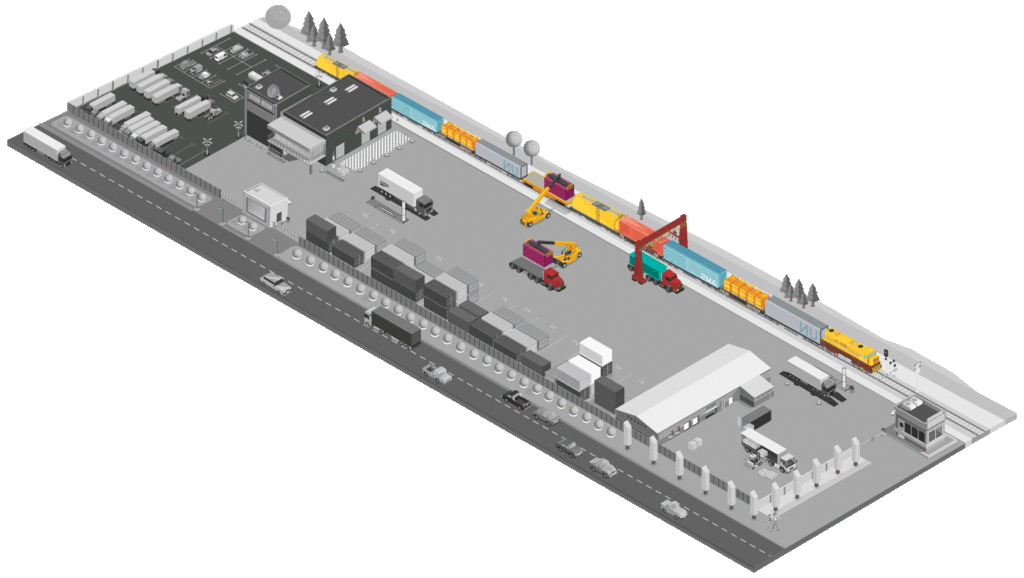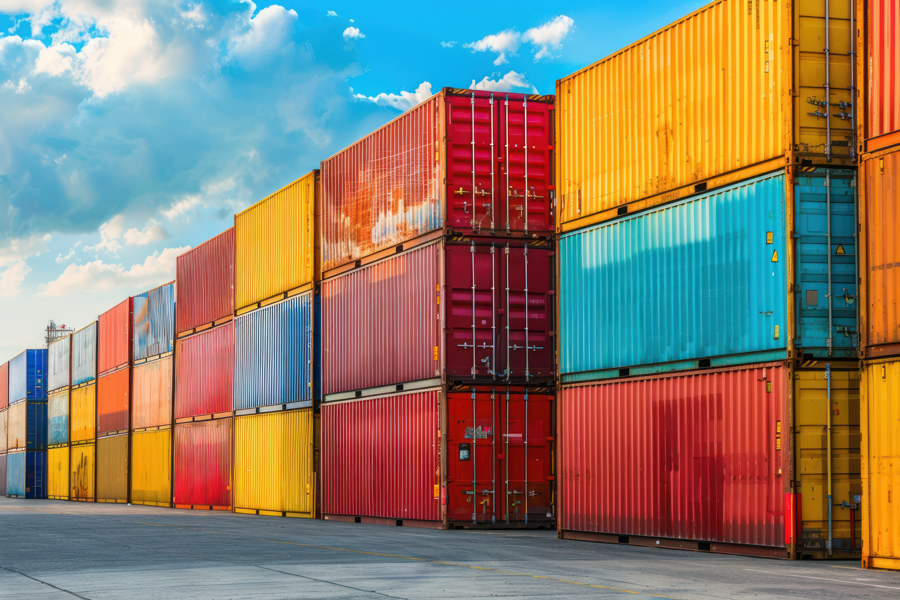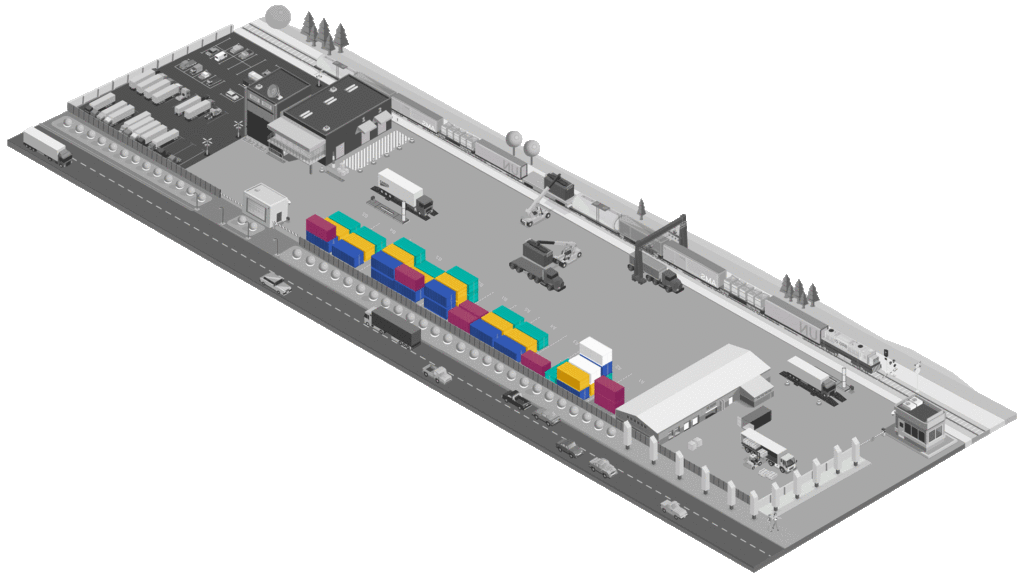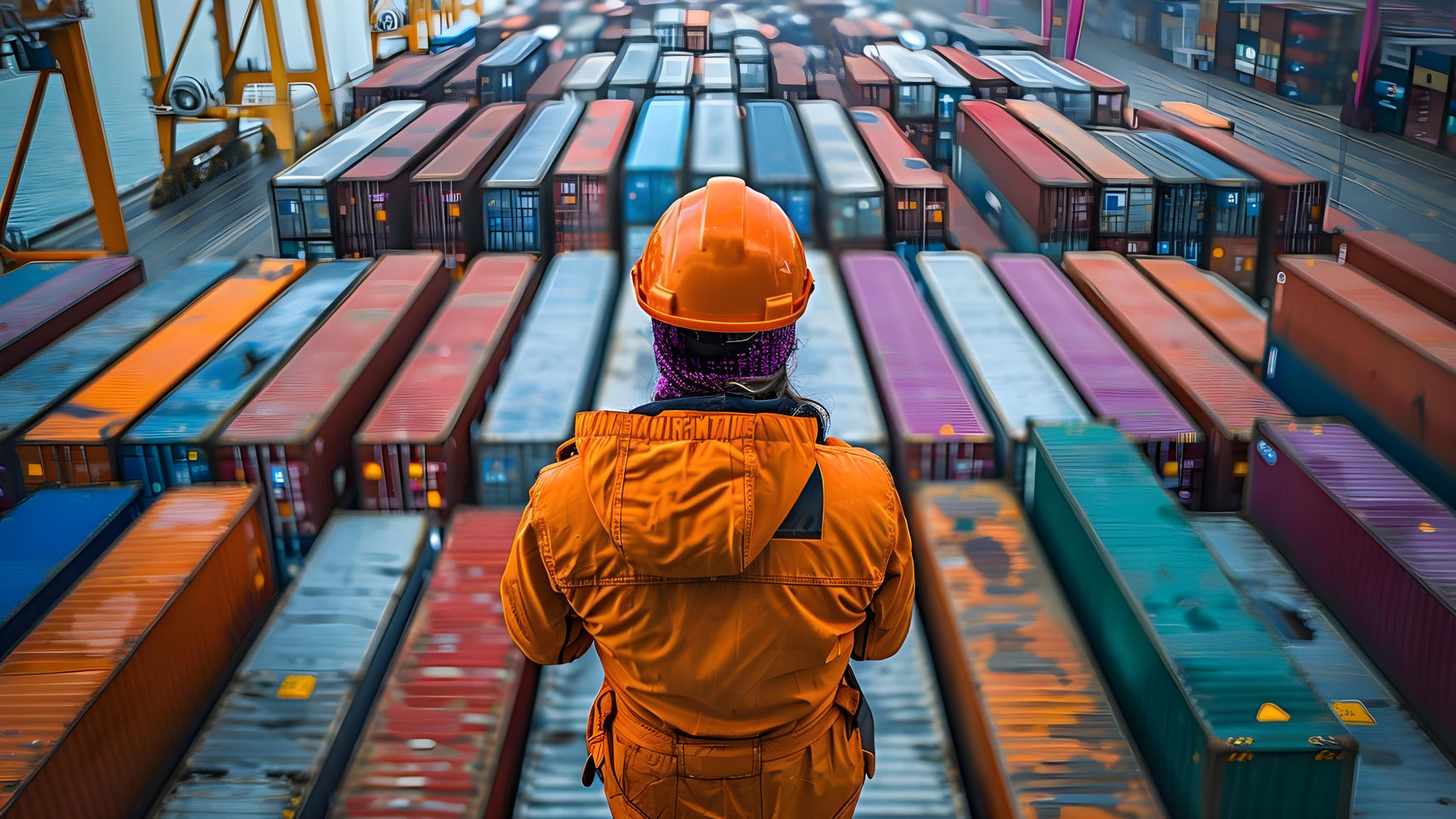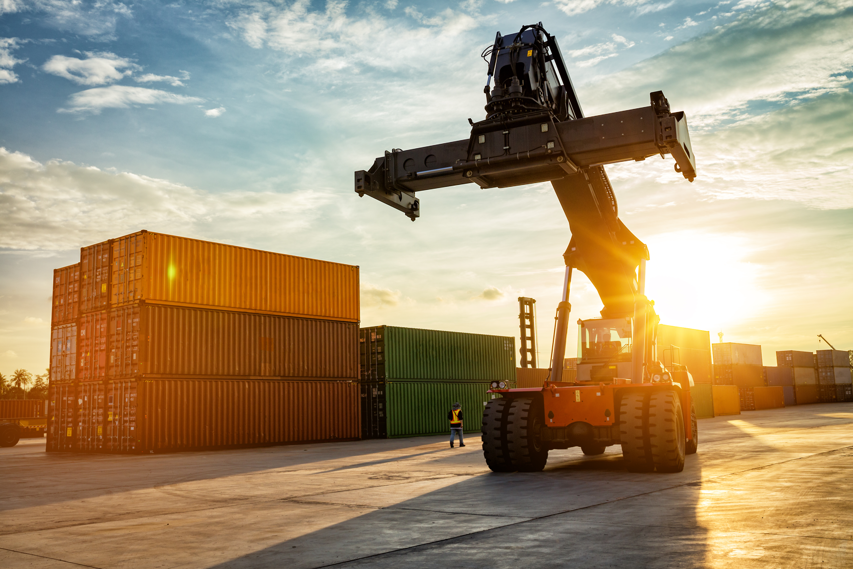In a sector where every minute of downtime costs money and a single wrong decision can immobilize an entire train, logistics consulting has shifted from optional to mission-critical. Yet not every consulting service delivers. This article breaks down what true operational consulting means in logistics, why so many initiatives fail, and how a logistics terminal can boost performance without disrupting day-to-day operations.
The roadmap is aimed at operations managers, terminal chiefs, logistics directors, digital-transformation leads, and anyone who knows that efficiency is built, not bought. We will discuss realities, not promises. Data, processes, and field experience can turn an outdated operating system into a fluid, traceable, and profitable chain.
What is true operational logistics consulting?
Logistics consulting is neither generic audits nor PowerPoint decks full of recycled ideas. It is not Lean Manufacturing copy-pasted onto terminals that play by different rules. Genuine operational consulting is hands-on, technical, and specific. It diagnoses with surgical precision what prevents a terminal from running better, maps a realistic improvement plan, and walks every step with the client without slowing the activity.
What makes it different? Its focus. While other models concentrate on planning or analysis, operational consulting has a single obsession: transforming the way a terminal works today (not next quarter, not next budget cycle). That requires full context: truck flow, shifts, scale usage, internal routes, yard occupancy, dwell time, and, of course, system integration.
From day one the indicators are crystal-clear: How many trucks enter per hour? How many moves are duplicated? How many weighing errors occur? How long between gate and train? Operational consulting leaves no room for vague speeches. It works on measurable facts and seeks immediate impact.
Why many consultancies fail in logistics
Logistics has quirks that make it unique. There is no margin for error, no production shutdowns for testing, and no time to retrain every operator in long cycles. Traditional consulting approaches from other sectors often collide with this reality. The outcome is predictable: recommendations impossible to execute, reports full of generalities, and zero transformation.
A typical case: an outside firm redraws a terminal layout without considering existing contracts, rail regulations, or available space, or suggests automating the gate without checking if carriers have the required digital tools. Such disconnection is why many projects end up shelved and why “consulting” can become a dirty word on the quay.
Technology-only visions add to the problem. Some firms deploy sensors, cameras, or platforms that nobody uses because the data does not feed daily decisions, or worse, it becomes another operational burden. Real operational consulting never starts with software. It starts on the ground, with people, and with genuine bottlenecks.
Many consultants also ignore the client’s pace. They try to overhaul twenty years of practice in six months, skip pilots, and fail to work alongside live operations. In logistics that is fatal: if an “improvement” interrupts the service, it stops being an improvement.
Therefore a solid logistics consultancy must master fieldwork, applied technology, and operational dynamics. Knowing processes is not enough; you must know what happens at 4 a.m. when truck lines form, weighing occurs in the dark, or a container is swapped under pressure.
Only then does consulting shift from an external service to an operational ally, one that co-creates better ways of working with the internal teams instead of imposing changes. That is the key for a terminal to evolve without losing control.
Critical focus areas: Gate, Weighing, Yard, and Rail
To create real impact, operational consulting must zero in on the nerve centers that dictate overall performance. In most terminals these are always the same: gate access, weighing, yard management, and rail operations. How these four elements interact determines operational flow, responsiveness to demand spikes, land-use efficiency, and satisfaction of clients and carriers.
The gate is not just a barrier; it is the first filter for control, security, and efficiency. Congestion, delays, or document errors here compromise everything downstream. Poor gate management can trigger truck queues that clog industrial parks, spark conflicts with local police, and rack up equipment idle costs. That is why consulting starts by measuring vehicle inflow per hour, visit repetitions, and elapsed time from arrival to entry.
Weighing is another major bottleneck. Many operations still rely on manual scales, paper validation, or steps that duplicate tasks, yielding weight errors, double weighs, lost traceability, and over-reliance on scale staff. Effective consulting proposes automated processes aligned with gate and yard so that the weight of a vehicle, container, and move is captured once with no extra touch. Proper weighing automation is not just technology expenditure; it is a structural shift in terminal response time.
The yard is the most complex zone to diagnose and transform. Space availability, occupancy planning, unit traceability, RTG interaction, load priorities, dwell time, and safety zones all collide. When mismanaged, the yard becomes chaotic, containers pile up randomly, and ground turns into the most wasted asset. Consulting must translate that complexity into a visual, actionable model and craft a dynamic occupancy strategy that moves with demand.
Finally, rail operations demand specialized attention. Trains do not wait. If units are not ready, weighed, and ordered on time, penalties soar. A rail-savvy consultant knows success starts hours before a train and hinges on how gate, weighing, and yard were handled. Everything is connected. Real transformation designs from an integrated view, not in silos.
Each of these critical points (gate, weighing, yard, rail) is a concrete, measurable improvement opportunity with direct ROI. The key is to treat them as a continuous flow, not as standalone systems. That is the basis for any consultancy that wants to leave a mark.
Designing improvements without halting operations
Every operations director shares the same fear: how to improve without stopping what already works. In logistics, downtime is not an option. Each lost day means un-loaded trains, queued trucks, unhappy clients, and revenue at risk. Good consulting identifies how to change safely, in phases, and alongside daily activity.
The first step is always an operational diagnosis done on site, not from an office. The consulting team must observe night shifts, watch truck queues form, see how manual errors are fixed, and listen to the people working each area. No spreadsheet replaces a morning on the ground.
After this diagnosis, the consultancy defines a phased transformation plan. Each phase must have a clear objective, a fixed timeline, associated metrics, and assigned responsibilities. For example, one phase may involve reorganizing access for external carriers to reduce validation times. Another could sync weighings with the gate using pre-registrations. Another might digitize yard space reservations. No phase should be executed without prior operational validation.
For this kind of implementation to succeed, the consultancy must work with the terminal team—not above it. Improvement is not imposed: it is co-built. And it adapts to the pace that operations allow. This includes preparing pilots on low-volume days, scaling up improvements during slower weeks, and validating results before moving to the next level. It’s not about changing everything at once, but transforming from within while respecting operational culture.
Additionally, the consultancy must provide control tools. Recommendations are not enough: every improvement must be measured. How much has access time been reduced? How many weighing errors have been prevented? What percentage of yard occupancy has been gained? How much has the total operational lead time improved? Only when these indicators are visible can the management team make decisions with confidence.
Another key element is traceability. The consultancy must ensure that each operational change is reflected in the systems. A paper-based improvement is useless if the software still asks for duplicate data or if the operator has to rewrite what’s already been done. Every improvement must connect to real systems and must integrate both the human team and existing digital tools. That is the only way to ensure the transformation is sustainable.
In short, designing improvements without disrupting operations is possible—but it requires methodology, experience, and a deep understanding of logistics terminal realities. It’s not a one-off intervention, but a full partnership that ensures each improvement becomes a new operational standard. And that can only be achieved by a consultancy that respects the client’s pace, speaks their language, and understands that real transformation isn’t measured in projects but in tons moved with less effort.
Real cases of operational transformation
Talking about logistics consulting without showing real cases is just theory. What truly sets one consultancy apart from another is its ability to generate demonstrable impact. That’s why this section highlights some of the most representative cases where consulting interventions radically transformed the operations of terminals, dry ports, and intermodal depots. These are real examples, with concrete metrics and visible results, where improvement wasn’t the goal—it was the outcome.
At a European intermodal terminal handling over 150 weekly trains and 9,000 containers per month, the consultancy identified three critical breakdown points: truck queues at access, recurring weighing errors, and delays in rail preparation. The team worked side by side with operations and IT leaders to redefine gate flows, automate scales using LPR, and integrate advanced yard load sequencing. The result: access times were reduced by 58%, double weighings were eliminated, and each train was prepared with 30% fewer internal moves.
In another case, a southern Spanish dry port specializing in reefer containers was suffering from severe information fragmentation. The gate wasn’t connected to yard planning, and each operator had to manually match papers to locate units. The consultancy developed a new digital occupancy model, redesigned entry validation roles, and defined an operational events protocol. The result: a 40% reduction in non-productive movements and a threefold increase in response capacity for unexpected arrivals.
In a logistics hub with rail ambitions but no active connection, the consultancy helped prepare the entire integration ecosystem. Gate processes were redesigned with a rail mindset, a slot-based reservation logic was created, and the team was trained in TAF/TAP protocols. So when the opportunity for connection arrived, the terminal wasn’t starting from scratch—it already had an operation ready to integrate rail from day one. This strategic preparation avoided critical errors and accelerated the project’s ROI.
In the world of empty container depots, where operations are often under-digitalized, the consultancy enabled a complete control model transformation. Manual lists were replaced with traceability by technical condition and location, with visual control through a dashboard. This cut time lost locating units by 70% and allowed for a more productive task reorganization aligned with real customer demand.
What all these cases have in common is a realistic, pragmatic, and results-driven approach. No off-the-shelf solutions were imposed. Instead, the work was done from within—understanding each client’s specific context, constraints, and opportunities. Real, adaptable, scalable, and sustainable improvements were built. That’s the essence of great operational consulting in logistics: not making promises, but delivering lasting change.
Consulting that leaves a mark: Impact, ROI, and control
Not every consulting process leads to transformation. Many firms deliver brilliant reports that end up shelved. What sets apart a consultancy that leaves a mark is its ability to trigger real, measurable, and lasting operational change. What does that mean for a logistics terminal? That after the intervention, operations run faster, errors drop, staff works more efficiently, and the financial results speak for themselves.
One of the main indicators that validate the impact of logistics consulting is the reduction of downtime. Every second a truck waits, an operator searches for a container, or a weighing is repeated, is lost money. When a consultancy helps eliminate these inefficiencies, the result is immediate: more moves per hour, faster unit turnover, and more capacity without investing in new infrastructure.
Another key indicator is traceability improvement. A terminal that, after a consulting process, can know at all times which unit is where, who handled it, and what event was registered, gains control. That control translates into client trust, regulatory compliance, and fewer critical errors. Traceability is not a luxury—it’s the foundation of a modern, reliable operation.
The third major ROI driver is human resource optimization. Many terminals operate with oversized teams simply because inefficiencies force them to duplicate tasks. Effective consulting enables shift reorganization, elimination of repetitive work, tool access for operators, and refocusing teams on value-added tasks. This not only improves financial ratios but also enhances workplace culture, professional satisfaction, and talent retention.
ROI can also be calculated based on gained capacity. Many terminals operate at full occupancy—not due to lack of space but due to poor space strategy. A consultancy that redesigns yard logic or reservation flows can free up to 25% of space without moving a single wall. That’s operational growth with zero CAPEX—a dream for any CFO.
Finally, well-executed consulting leaves behind control tools: operational dashboards, real-time KPIs, daily reports by role. It’s not about reviewing the past—it’s about managing the present with data. When every area manager can see what’s happening in real time, compare it with the day before, anticipate issues, and respond quickly, the terminal stops being reactive and becomes proactive. That’s pure efficiency culture.
In summary, consulting that leaves a mark isn’t the one that proposes the most changes—it’s the one that ensures those changes stick, persist, and become new standards. It’s not about reinventing the terminal, but bringing out its best through honest, rigorous, and results-focused support. Because in logistics, what doesn’t improve becomes a cost. And what transforms well becomes a lasting competitive edge.
A new operational era begins with smart decisions
At the heart of every terminal, dry port, or intermodal platform beats the same urgency: operate more, better, and with less. Market pressures, regulatory changes, space constraints, demand volatility, the rail boom, and traceability requirements shape a landscape that’s as challenging as it is fertile—for those who know how to adapt. In this context, operational consulting becomes essential. It’s no longer optional—it’s the catalyst needed to move beyond legacy models, inefficient habits, and reactive decisions.
But not all consulting is created equal. The difference lies in the approach. In logistics, where every minute counts and margins depend on seamless coordination between gate, weighbridge, yard, and train, the value isn’t in the PowerPoints—it’s in the field. In showing up, watching real shifts, listening to the operator who spots issues before the system does, and understanding each infrastructure’s internal logic. Because no two terminals are alike. That’s why every solution must be unique, designed from within, and implemented with respect for daily operations.
Truly transformative solutions aren’t born from tech trends or imported buzzwords. They come from experience—having seen hundreds of terminals, knowing which decisions work and which lead to inertia. Efficiency isn’t just a KPI—it’s a mindset, a workflow, and a way of anticipating. And that’s not something you teach on a slide—it’s proven in the field, with real outcomes.
Operational transformation doesn’t have to be disruptive. In fact, the best consultancies don’t interrupt—they accompany. They identify the terminal’s rhythm and amplify it. Sometimes it’s enough to redefine an access rule, sequence loads better, eliminate five unnecessary papers, or connect systems that should never have been isolated. The revolution often lies in the details. But those details are only seen by those who’ve lived through hundreds of shifts and improved hundreds of yards.
And then there’s the invisible part—the one not always captured in reports but that determines success or failure: change management. Effective consulting doesn’t impose—it persuades. It doesn’t blame—it builds. And most importantly, it doesn’t disappear after delivery—it stays until the new model is solid. Because real efficiency isn’t just about launching a system—it’s about making it work every day, with every user, under real-world pressures.
That’s why those who choose quality logistics consulting aren’t just seeking efficiency—they want vision. They want partners who can read operations with expert eyes, spot opportunities where others see bottlenecks, and build competitive advantages where there were only repetitive tasks. Most of all, they seek control: the ability to understand in real time what’s happening in their terminal, with solid data, fast decisions, and visible results.
In today’s landscape ( where every day counts, every client demands more, and every mistake costs more), operating without a clear roadmap is a risky bet. The terminals that survive aren’t the biggest—they’re the most adaptable. And adapting doesn’t mean improvising. It means diagnosing, prioritizing, redesigning, implementing, and continuously improving. That’s the essence of great consulting.
Today, hundreds of terminals around the world are sitting on untapped potential: underutilized space, duplicated flows, overloaded staff, decisions without data, disconnected systems. Each of these is a latent improvement opportunity. One that doesn’t require changing everything—but understanding everything better. That’s exactly what modern logistics consulting does: open eyes, bring order to chaos, and guide evolution.
From high-turnover rail terminals to small container depots, from growing dry ports to integrated logistics zones or structurally challenged multimodal platforms—all can benefit from an expert, honest, and committed outside perspective. Because operational improvement isn’t a luxury. It’s the only way to keep competing in an increasingly demanding world.
The message is clear: if your terminal still runs on paper, if trucks wait for no reason, if trains don’t depart on time, if data doesn’t guide decisions—it’s time to act. And acting doesn’t mean complicating—it means prioritizing. Start with a solid diagnosis. Identify what hurts most. Focus. And partner with someone who doesn’t just understand the problems—but knows how to solve them.
At Essentos, we’ve spent years helping terminals of all types improve their operations—not with off-the-shelf recipes, but with solutions tailored to each context. With proprietary methodologies, expert teams, and one clear obsession: making every terminal work better. Because behind every container, every train, every truck queue… are people, challenges, and decisions that can shape the future.
Today, your terminal has two options: keep doing things the same way, or take the first step toward a more efficient, more connected, and more profitable operation. The difference lies in choosing the right partner.

